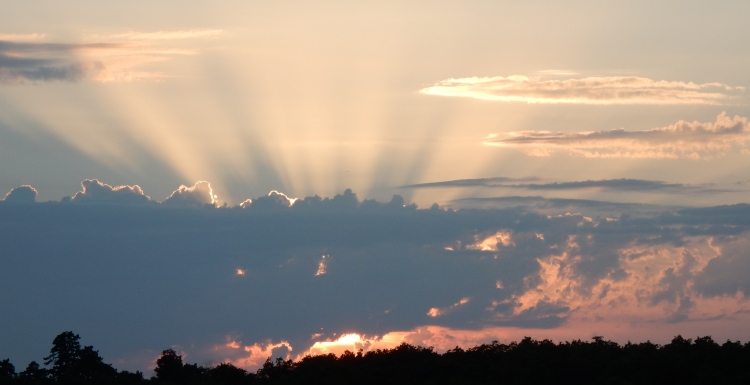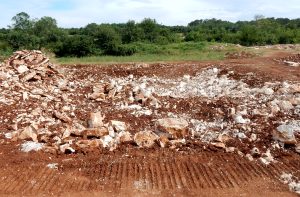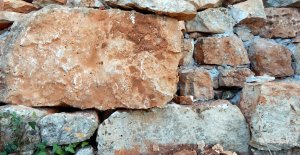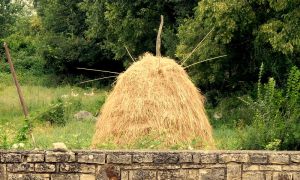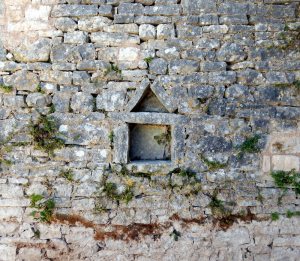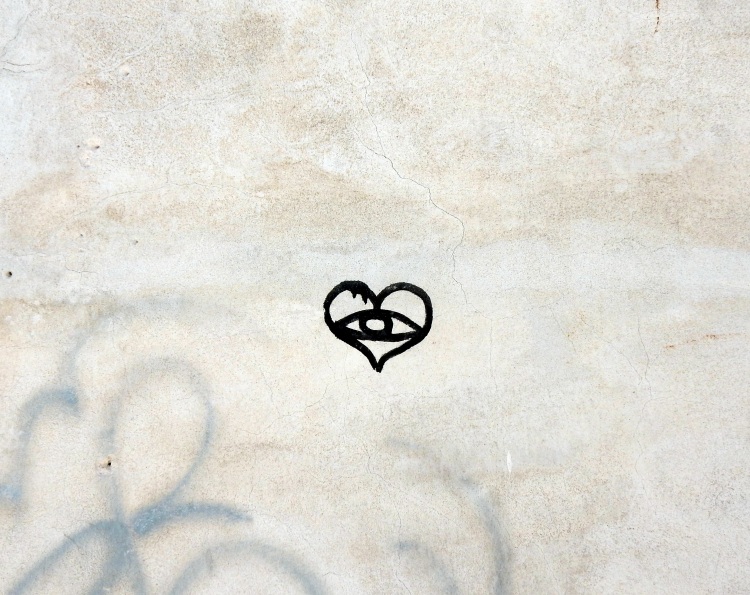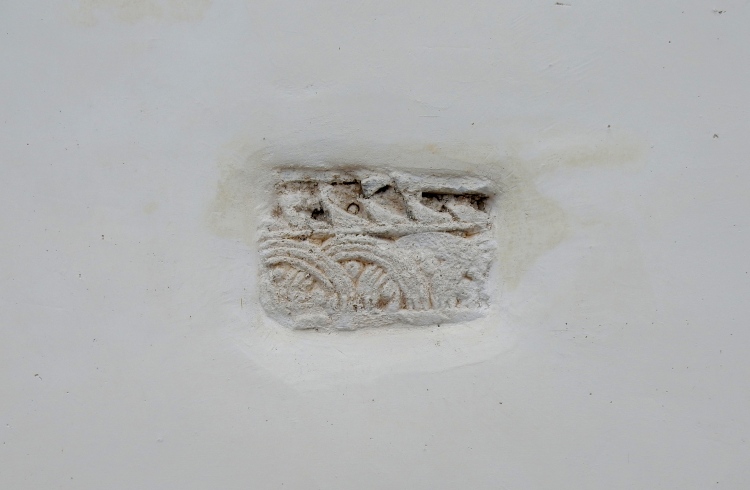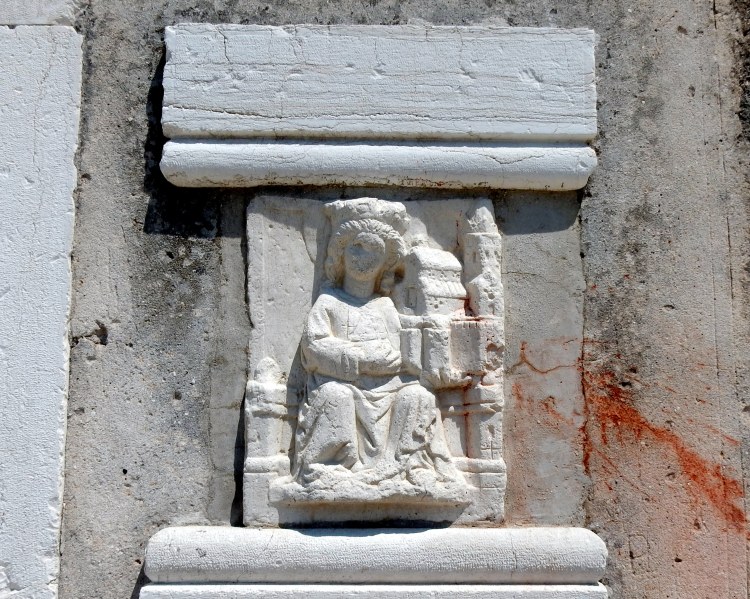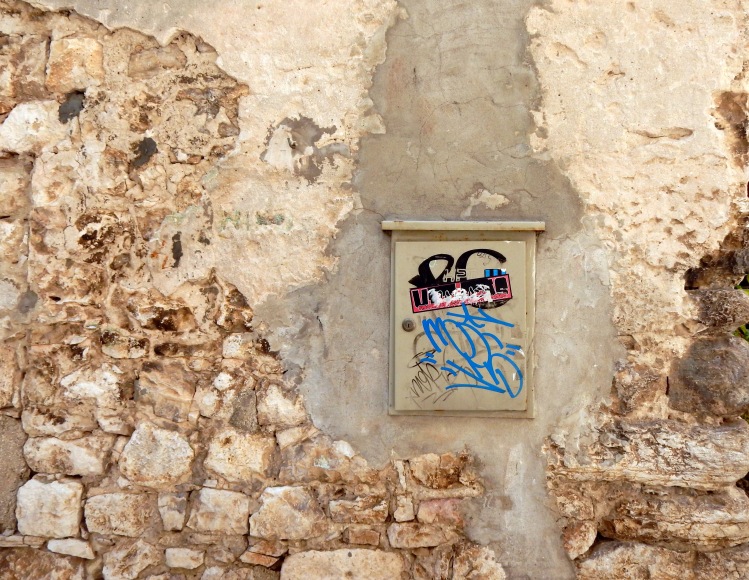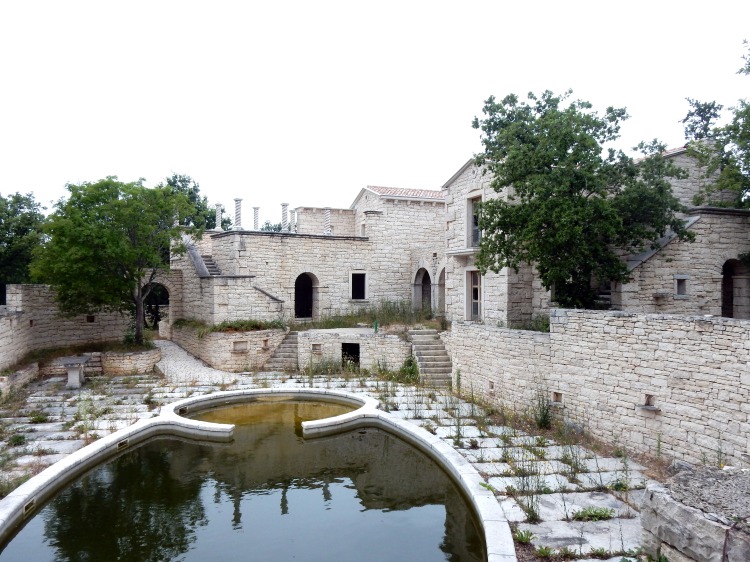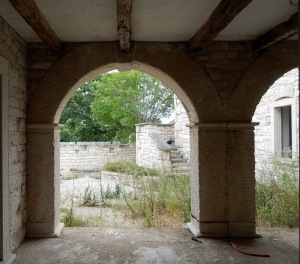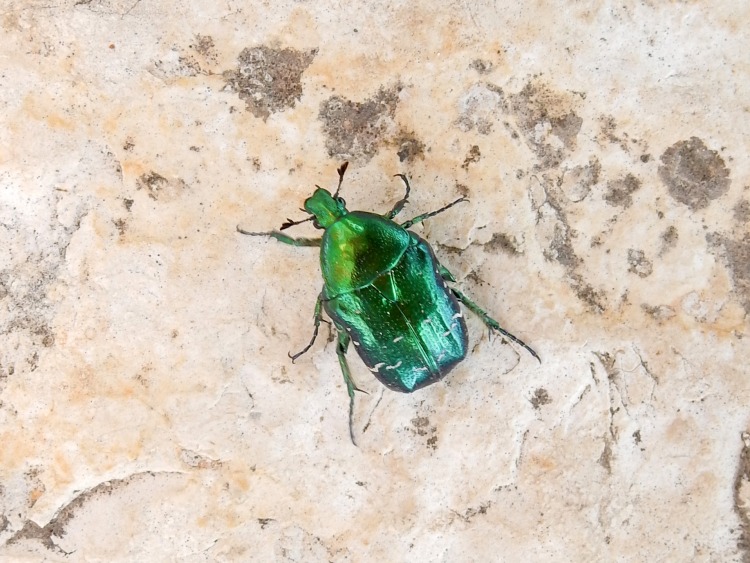I’ve had a few requests to share the talk I gave at The Unseelie Court event organised by Folk Horror Revival in October.
So here it is:
We’ll come back to that guy on the slide later.
I’m guessing that most people in the audience will be familiar with Ben Wheatley and Amy Jump’s film A Field in England. So, to kick off this talk, I’d like to invite you on a journey and imagine if you will:
A Field in Fife:
SLIDE
The commuters scurrying down the stairs at Rosyth Halt railway station, are unlikely to give much thought, if any, to the field on their left as they descend to the platform below. Some may notice subtle changes in colour throughout the year. The recent appearance of yellow broom blossom; the overhead sun creating a dappled patchwork of greens, sandy browns and heathery purple. In a few weeks, the hawthorn blossom will sit like scented snow on the ancient hedge.
Standing at a certain part of the station platform, it is possible to hear the gentle purr of the Whinny Burn tracing its route through the field on its way to the River Forth at Inverkeithing Bay. Magpies, rooks and collared doves appear to take a curious interest in the arrivals and departures of station commuters whilst overhead, the sun splinters around the extended wings of a buzzard soaring like Icarus ever higher into the blue.
The field is now bounded on all sides by a motorway spur, a dual carriageway and the railway line. An almost sealed off and severed island of abandoned agricultural land cast adrift with no easy public access.
At the top of the halt steps, there are no particularly distinguishing visual features as we look out over the land which we are going to walk through. As a train arrives on the platform below, a late flurry of commuters hurl themselves past us and down the stairs to squeeze into the carriages before the doors close.
Most are unlikely to be aware that there may be as many as 2,000 bodies buried somewhere in the vicinity.
July 1651
It was during the night or early morning of 16th /17th July 1651 that the troops of Oliver Cromwell’s New Model Army landed on the north shore of the River Forth at Inverkeithing Bay. Whilst they had inflicted a heavy defeat on the Scottish army at Dunbar on 3rd September 1650, they had been thwarted by attempts to advance further into Scotland.
Cromwell had concluded that Fife was strategically key and by 20th July 4,500 of his troops were dug in on Ferry Hills, whilst a Scottish force of a similar size had grouped at Castland Hill. Both locations just outside present-day Rosyth. The threat of Scottish reinforcements coming from Stirling provoked Cromwell’s army to attack and force the Scottish infantry to retreat northwards. On land close to Pitreavie Castle, the Scottish infantry made a final stand but were soon overwhelmed by the more experienced Parliamentarian army who had the additional advantage of cavalry. The Scots suffered heavy losses. This became known as The Battle of Inverkeithing (sometimes The Battle of Pitreavie) and was the last major battle of the Wars of the Three Kingdoms in Scotland. From 1652, Scotland was wholly under control of Cromwell’s Protectorate.
The casualties on the Scots side were certainly heavy. Most sources agree that around 2,000 people were killed and around 1,500 taken prisoner.
It is said that the burn in the field ran red with blood for three days.
SLIDE
Entering the field is not too difficult. Not far from the station steps there is a locked gate but a little further along we find a gap in the hedgerow. If you are prepared to navigate, or slide down a steep slope, this will deposit you amongst the heap of discarded plastic bottles and assorted rubbish tossed from the stairs above. At ground level, the topography of the field is much more apparent. Pronounced undulations ahead of us, sloping off to the right towards marshy ground around the Whinny Burn. Ground cover is a mix of meadow type grasses, whin bushes, dandelions and what look like dock leaf plants gone to seed.
You only have to look towards the perimeter of the field to be aware that you are surrounded by human presence. The rooftops of Rosyth to the right and the hum of traffic a constant, low-level signal. Yet on the actual land we are walking, it is rare to find an almost complete lack of evidence that humans have recently passed. No litter, no discarded cans or bottles. No burnt out barbecues.
There are hints of desire lines traversing the space, possibly made by committed dog walkers, who have found a hidden access point, or could they be made by something else? It is only as we move further and deeper into the field, that there is a clear sense that we are being watched.
SLIDE
At first, we wonder if it is a dog but it soon becomes apparent that it is the eyes of a tiny deer, a tiny roe deer fixed on our movements. We are both probably equally surprised by this encounter. This is not an area where you would typically expect to see deer. Where on earth has it come from? How has it accessed the sealed off field? We lock into that non-time state of reciprocal, motionless, staring.
Eventually the deer decides to break for it. Great elongated leaps for something so small – as if bouncing off the air itself, not really touching the ground. I manage to retrieve the camera and fire off some random shots in the hope that we obtain some record of this having happened.
SLIDE
We notice our presence is also alarming a number of skylarks which appear to have made the field their own. Their nervous, vertical flight and fluted song a mix of terror and beauty as we try to avoid what must be their nesting areas. It is us who have made this land strange. We are the other.
The field separates in two at a ridge of hawthorn bushes.
On the other side:
SLIDE
A field of time
history layered
on geography.
Transparent globes
of wind held tension
time scattered
yellow flowerings
of the eternal return
The field eventually tapers to a point where we can go no further, blocked off by the railway and the smooth, solid concrete structure carrying the A823 motorway spur.
We walk around the northern perimeter with only a thin hedgerow between us and the spur traffic. Such a slight threshold separating us from our field of time, skylarks and deer. On the other side, the surveillance cameras, crash barriers, lay-bys and signs – all the material apparatus of the modern motorway.
SLIDE
A footbridge takes us over this strangely empty vista, conjuring up something from Ballard, and into the relatively new ‘non-place’ of Carnegie Campus. As Marc Augé has said:
Place and non-place are rather like opposed polarities: the first is never completely erased, the second never totally completed . . .
SLIDE
We know from the old maps and records that this land was also once part of ‘the field’. Being a Sunday, the ‘campus’ is completely deserted as we wander amongst the new-build office blocks, many of which still look unoccupied. Roundabouts appear to have been built in hope of a time still to come as roads abruptly end.
Where the manicured non-place runs out, there is a sense of encroaching wildness, biding its time. An explosive wild bouquet of whin sits amongst a covering of red campion:
SLIDE
And yet amongst all the shiny new sheen of this place, older voices intrude. A hexagonal brick structure whose original purpose is unclear:
SLIDE
time stacked textures
brick and concrete
Nestled at the side of the main road into the campus we come across the cairn. As far as we are aware it is the only explicit acknowledgement of what happened on this land.
SLIDE
the Scots were driven back to the level ground between Hillfield and Pitreavie. Here, in one of the most famous episodes of the Battle of Inverkeithing, the Clan Maclean of Mull commanded by their chief, Sir Hector, found themselves surrounded by superior enemy forces. The clansmen fought fiercely in defence of their chief, calling out, [“Fear eile airson Eachainn!” ] “Another for Hector!” as they sacrificed themselves.
This cairn was only erected in 2001 by the Clan MacLean Heritage Trust. It is thought that the McLean dead are likely to have been buried in a mass grave somewhere within the field.
Nearby, stands another material presence in the layered history of this land. Peering over a substantial stone wall allows us a view of the Doocot in the grounds of Pitreavie Castle.
SLIDE
Pitreavie Castle was originally built in the early 17th century by Henry Wardlaw of Balmule. We pass the doocot, turn left and walk past the front doors of the Castle where the initials of another Henry – Henry Beveridge are recorded. Beveridge purchased the Castle in 1883 and extensively re-modelled it in 1885.
SLIDE
Beveridge was a wealthy mill-owner, philanthropist and educator from Dunfermline. He was an associate of the Scottish polymath Patrick Geddes having attended Geddes’s summer meetings in Edinburgh. Geddes also introduced Beveridge to the artists John Duncan and Charles Mackie who painted murals in the castle illustrating the legends of Orpheus and, due to the local historical connection, the famous ballad of Sir Patrick Spens.
“The king sits in Dunfermline toune
drinking the blude reid wine,
“O whar will I get a guid sailor,
To sail this schip of mine?”
[It has been claimed that Elizabeth Wardlaw, the granddaughter-in-law of Henry Wardlaw was the author of Sir Patrick Spens, although the evidence appears to be somewhat tenuous].
It is believed that the Castle murals may now be at best over-painted and at worst destroyed but a good example of John Duncan’s Symbolist style can be seen in his famous work, The Riders of the Sidhe:
Walking past Pitreavie Castle today, now converted into flats and apartments, offers no clue as to another more recent past life. It was bought by the Ministry of Defence in 1938 and after the second world war, deep in a basement bunker, became the headquarters of NATO’s Northern Maritime Region. During the Cold War, all Soviet ships and submarines on exercise in the North Sea were monitored from here. The base only closed in 1996 and operations moved to RAF Kinloss. There is little or no outward trace of this today, although some photographs of its past life exist:
SLIDE
The first picture shows access to the underground bunker
And the second is the teleprinter room from 1944.
As we head along Castle Drive, we notice that a small housing estate also has a story embedded in the landscape, hidden amongst the street names:
SLIDE
Covenanters Rise: The Scottish army that fought against Cromwell was a Covenanter army, acting under allegiance to Charles II.
Then there is MacLean Walk: a reference to Sir Hector Maclean.
Sir John Brown Place is named after the commander of the Scottish lowland infantry and
Overton Crescent: refers to Colonel Robert Overton who led the assault party of New Model Army troops that landed in Fife on that night in July.
Our final part of the walk will take us along Castle Drive where we will loop around to return us to where we entered the field by the station. Despite the changes over the centuries, we have walked the area of the field as it was in 1651. A shifting terrain of presence and absence only partly represented on the maps. As the great Polish poet Wisława Szymborska says:
I like maps, because they lie.
Because they give no access to the vicious truth.
…
they spread before me a world
not of this world.
And we continue to ponder our mysterious encounter with the solitary roe deer. How did it access the field and why was it there? Perhaps, a glimpse of the eerie leaking into the everyday. We think of ghostly highlanders, adrift in their field with only the skylarks for company.
As we walk down Castle Drive we pass another new addition to the landscape on the left. A customer contact centre for Rupert Murdoch’s Sky empire.
On the other side of the road, a magpie picks at the carcass of a dead squirrel.
SLIDE
So, I hope that gave you a bit of a flavour of what could be described as a psychogeographic approach to landscape and how it can interact with the past, the present and the everyday. The key point is that this is not, let’s say, a destination landscape. It is literally embedded in the material fabric of the everyday. People traveling to work, actual places of human activity, arteries of transport infrastructure and housing. You don’t have to travel to London to do psychogeography. Why not Rosyth or Lochgelly? It can be on your doorstep or in very close proximity and is one way of becoming engaged in your local environment wherever that may be.
SLIDE

So What is Psychogeography?
Now the term psychogeography may be unfamiliar to some people in the audience but I would guess that most of you will have experienced it. To adapt Joseph Beuys – who incidentally stalks the corridors of this building – Everyone is a Psychogeographer.
Think back to when you were a child. You had little interest in moving through space in a linear fashion from place A to place B. Time was much more fluid. You would encounter playful distractions in the landscape – a tree to climb, or in my case, a concrete hippo or toadstool in the New Town of Glenrothes. You may have unwittingly performed part of Yoko Ono’s City Piece
Step in all the Puddles in the City
You might find sticks to pick up; objects to poke with a stick. You might sit down to observe a line of ants crawling across the pavement. Following the sound of a distant ice-cream van may lead you through new routes in familiar streets. You may have pondered questions such as why does that building have such a large fence around it? Why does that sign say ‘Keep Out’?
Fast forward to walking through an unfamiliar city. It is likely that you will encounter different zones of feeling as you move through the environment. You may end up in an area that for whatever reason makes you feel uncomfortable and you want to walk away quickly. Conversely, the particular ambiance of an area may make you feel relaxed or even carnivalesque. At other times a particular city environment may make you feel literally ‘out of place’.
Contemporary psychogeography has many different strands which makes it difficult to pin down precisely, but from the above we can pull out certain common characteristics:
- It usually requires walking or moving through space;
- there is some form of subjective engagement with the environment and
- probably some form of implicit questioning as to why the environment is the way it is.
The follow-on question, may be, does the environment have to be like this and how could it be changed (or even preserved)?
SLIDE
In the history of ideas, most of the literature about psychogeography refers back to the Lettrists and the Situationists who defined and developed their psychogeographic activities, such as the dérive – or drift – in Paris during the 1950s. (Most of it within that triangle I’ve mapped out on the slide).
Guy Debord’s definition of psychogeography is commonly cited:
Psychogeography sets for itself the study of the precise laws and specific effects of the geographical environment, whether consciously organised or not, on the emotions and behavior of individuals.
[Guy Debord, Introduction to a Critique of Urban Geography, (1955)]
(Mmm – I’ve always had a bit of a problem with the ‘precise laws aspect of that definition’. I very much doubt that psychogeography can ever be subject to precise laws. Another cognac required for Guy perhaps.
Our own research has uncovered that the term was used much earlier by an American anthropologist, J. Walter Fewkes in a non-urban context in the early 1900s:
SLIDE
There it is … “psychogeography, deals with the influence of geographical environment on the human mind”.
Fewkes wrote this in 1905 and was using the term to examine the Native American Hopi people’s strong connection with their landscape. The arid conditions led them to develop a set of beliefs, practices and folk rituals, such as the rain dance, to appeal to the sky gods for water.
We have yet to see any mention of Fewkes in the psychogeographic literature but firmly embrace the idea of an expansive psychogeography: the influence of the geographical environment on the human mind in both urban and non-urban contexts. This also recognizes the presence of the non-human world in our landscapes. In this respect, we are probably more influenced by Patrick Geddes than anything else. Indeed, the name of our book From Hill to Sea is a nod towards Geddes’s concept of the Valley Section (basically – “it takes a whole region to make the city”) which was adapted from the ideas of the anarchist geographer Élisée Reclus.
I personally, like this comment on psychogeography from Alan Moore:
SLIDE
So, all of the above definitions kind of pull at the same strings but what about doing it in practice? As a starting point, I think you could do worse than consider this piece Open Field from Pauline Oliveros, the pioneering, American composer and proponent of Deep Listening. I like how this emphasises being present, engaged and attentive in the everyday. A succinct manifesto for being-in-the-world.
SLIDE
SLIDE
So, moving on to the final part of this talk, I want to try to link three elements together: psychogeography, folk horror and the everyday. Here are some short extracts of walks undertaken which show how elements of the uncanny, folk tales, and horror are all there – embedded in the landscape of the everyday.
This image was taken up on the Fife Coast Near Largo Law (or Hill for anyone unfamiliar with the term).
We soon encounter the talisman lying in the dunes. It’s protective, synthetic membrane, perished long ago by wind and water. Now crusted with sand and water-logged, it has transmuted into a living entity. Green tendrils sprout from the surface. It appears to be an auspicious omen, a process of alchemy worthy of the legendary Wizard of Balwearie, Michael Scot, (1175 – c.1232), reputed to have form in these parts.
Local legend has it that Scot summoned his three imp familiars, Prig, Prim and Pricker to Largo Law with a view to levelling it. A sort of job creation scheme for hyper-active familiars. As they began to dig, Scot had a change of plan and the imps were hurriedly dispatched to Kirkcaldy to make ropes out of sand. This was to assist Scot in his showdown with the devil on Kirkcaldy beach. Scot appears to have triumphed in the encounter as evidenced by a local saying: “The devil’s dead and buried in Kirkcaldy”. Due to the ‘Kirkcaldy interruption’, only a single shovelful of earth was thrown from Largo Law to create the cairn of Norrie’s Law at the wonderfully named farm of Baldastard. There are also local folk tales about an abundant goldmine that supposedly exists underneath Largo Law and that sheep have returned from grazing on the foothills with golden fleeces.
Balwearie, Kirkcaldy
Moving down the coast to Kirkcaldy itself, you will find plenty more everyday references to our wizard Michael Scot. As a historical person, he most certainly existed although like many similar figures it is difficult to untangle history and myth. He studied, maths, philosophy and theology at Oxford, translated Eastern and Arabic texts and developed a strong interest in alchemy, astrology and sorcery. He was appointed as personal astrologer to Frederick II, the holy Roman emperor and pops up in Dante’s The Divine Comedy, where he is consigned to the Eighth Circle of Hell reserved for astrologers and sorcerers.
Every school day, the young people of local Balwearie High School wear the school badge depicting Lions Heads, stars and crescent moons of the Scot family coat of arms. In local Beveridge Park you can find a wizard’s trail to follow which claims that Michael Scot lived in nearby Balwearie Castle and recounts the afore-mentioned story of him fighting Lucifer on Kirkcaldy beach and also managing to travel to France in one evening on a magical black steed. (Take that Harry Potter).
You can still walk to the ruins of Balwearie Castle today. It is fair to say that it manages to conjure up a certain atmosphere worthy of a practitioner of the dark arts.
SLIDE
Moving on to a short walk between Crombie Point and Torryburn
SLIDE
Ink etched blue silence.
Cold harbour spires, sketched over cubist sails.
Thorn pinned birds still tethered.
Wings opening, sensing the sky
SLIDE
We pass the ruined pier at Crombie Point where Jules Verne arrived on 30th August 1859 following a three-day exploration of Edinburgh.
SLIDE
Beyond the door-less door. An invitation to enter? What lies beyond the threshold, the scattering of leaves and crouched shadows?
On the ancient, whispering walls, the faces start to appear.
Language of the stones, silent tongues ….
And on this short stretch of coastal path, the receding tide and dying light coats Torry Bay in an emulsion of gun-metal grey. A vista of colour-bleached beauty with a tangible undertow of concealed violence bleeding over the mudflats.
SLIDE
In the middle of Torry Bay you will see witches rock. This rock was used to tie-up and restrain anyone suspected of witchcraft. Here the witches were judged and simultaneously sentenced as the tide rose. If they drowned, they were absolved of being a witch, but if they survived they were deemed to be a witch and burned at the stake.
(that is actually from one of the heritage interpretation boards located on Torry Bay)
More on the dark history of this short stretch of Fife coastline emerged from the Tales for Travellers Project which we participated in last year which included a social walk following a journey originally undertaken by Ben Jonson from Culross to Dunfermline in 1618.
On Torry Bay the sky appears to expand to a grey cloak as we experience a brief rain shower. It’s a suitable backdrop for Kate Walker to tell us of the dark history of witch hunting along this coast in the seventeenth century. Zealous, self-appointed witch-finders, usually being local clergymen searching for those who had ‘danced with the devil’. They used an armoury of pseudo-scientific techniques to prey on poor, elderly, and vulnerable women, with their use of witch pricking and searching for the devil’s mark. The familiar power structures embedded in organised religion and misogyny. Kate recounted the tragic story of local woman Lilias Adie, buried face down in the mud on the beach, between the high tide and low tide marks as it was outside consecrated ground. Buried neither on land or at sea, huge stone slabs were placed on top of her; a folk remedy for revenants who were suspected of returning from the grave to torment the living.
SLIDE
Up in the village of Menstrie in Clackmannanshire we find the silent contemplation of Fox Boy. A sculpture inspired by the now-extinct practice of children keeping foxes as pets”.
SLIDE
Devilla Forest, near Kincardine is an area with a long history of land use. Prehistoric coffins, stone circles and Roman urns have all been found here together with more recent structures such as the remains of a World War II explosives research establishment. There is a stone which local legend says is marked by the grooves from a witch’s apron string and there is a history of numerous big black cat sightings in the area. There is also the rather unsettling setting of the Plague Graves where trinkets and offerings are still left and hung on nearby trees.
SLIDE
Windylaw
Just outside Pattiesmuir, you can find a quite inviting path leading up to a crest of trees.
SLIDE
I wonder if your perception may change if I tell you that this is Windylaw, an extremely old coffin track leading down to the long-abandoned churchyard of Rosyth. I would also add that from the crest of the hill you can look over to Rosyth dockyard where seven, decommissioned Polaris nuclear submarines, lie rusting in storage. A real example of horror embedded in the landscape.
At the very least, the psychogeographer can reverse the panoptical gaze of the modern political machine. Standing here we can use landscape as a mirror to reflect back. We can see the war machines, the entropic processors of fossil fuels, how the local is connected to the global. On this spot we can be the watchers. We can see what you are up to and imagine and enact alternative possibilities. (Such as going for a walk!).
Sometimes the everyday world can be made strange in an instant, when you alight on an unexpected object in the landscape, awaiting a story to be told.
SLIDE
The sun reflects from the elegant curve of bleached white bone amongst a bed of grey feathers. Ribs sparkle like some primitive xylophone and still attached to the leg, a small dark hoof. The sweep of bones and sinew appear to retain some residue of movement – of a life-force that has been so abruptly arrested. Who knows what happened to this (we guess) young deer?
Detached and slightly further away lies the white skull, stripped and pecked clean. The downy feather bed suggests that some of the birds who came to feast on the carcass ended up being part of someone else’s meal.
Fur, feather, rib, bone
Old Nature Writing
And finally:
SLIDE
He’s back!
I must admit that this extends the concept of the everyday somewhat as it happened last year whilst on holiday in Istria, Croatia.
A visit to a small hilltop town called Motovun which had only a handful of people walking around, to the extent that the labyrinth of tiny curving, cobbled streets were mostly deserted, creating its own sense of the eerie.
You can perhaps imagine how this was compounded upon turning a corner and being confronted with this straw giant staring us out with his silent gaze. I reckon he must have been over twenty feet tall and at his feet a band of acolytes engaged in some folk ritual or dance, arms thrown open to embrace the sun. There was a distinct feeling of something of the Wicker Man about it all.
As far as I could find out, his name is Veli Jože, a giant who lived (or lives?) in a nearby truffle-rich forest. Local stories suggest that he has been known to enter the town and physically shake the church tower to sound the bell.
Ending
And so that brings me to the end of my talk. I hope it has given you some flavor of potential linkages between Psychogeography, Folk Horror and the Everyday. I’ll be around for the rest of the day and this evening if you want a chat. There are also a couple of books available on the goodies table if you are at all interested. From Hill to Sea which I’ve mentioned before and Language of Objects which has just been released and is a collaboration between myself and the sound artist Brian Lavelle who is in the audience somewhere. (Book includes a CD of Brian’s sound piece).
And just to mention that when you do leave this evening, look up at the skies over the Old Town of Edinburgh. You may be surprised at what you see:
SLIDE

[Endpiece from Dramatizations’ of History: The Masque of Ancient Learning and Its Many Meanings by Patrick Geddes, Edinburgh: Patrick Geddes and Colleagues, (1923)].
Thank you for listening.
and as you head for lunch – a final thought to leave you with:
≈≈≈
Many thanks to the Folk Horror Revival team for the invite to talk and for putting on such a great day and evening of words and music. A special thanks also to Chris Lambert for stepping in to manage the slide show after the slide pointer appeared to give up the ghost. (May well have been operator error!).















































